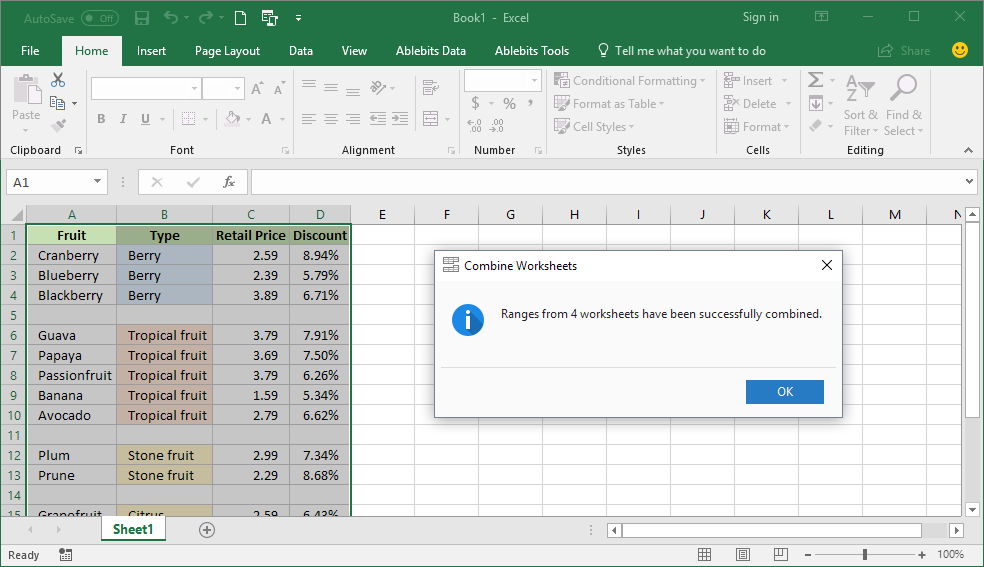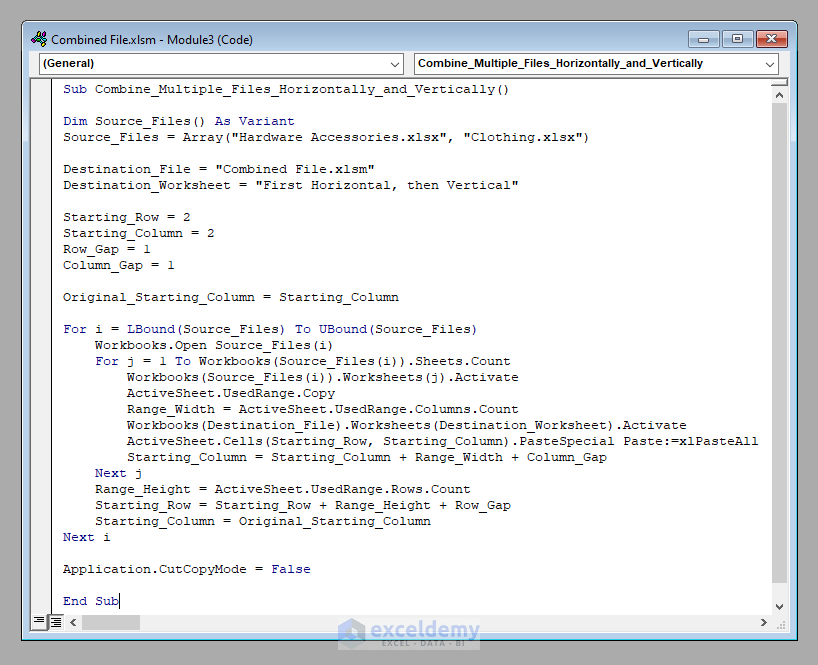Merge Multiple Excel Sheets Into One Master Sheet Easily

There's no doubt about it: Microsoft Excel remains one of the most powerful and versatile tools for data management, analysis, and reporting. Whether you're a business analyst, a project manager, or just someone who deals with a lot of data, you'll likely encounter scenarios where you need to consolidate data from multiple Excel sheets into one comprehensive workbook. This process can be daunting if approached manually, but with the right strategies, merging multiple Excel sheets into one master sheet can be a breeze.
Why Merge Excel Sheets?

Before we delve into the how-to’s, let’s consider the why:
- Consolidate data from various sources: When data comes from different departments, teams, or locations.
- Reporting and Analysis: Creating a single point of truth for analysis, especially when reporting requires combining multiple data sets.
- Data Cleaning: Easing the process of removing duplicates and correcting errors across multiple spreadsheets.
Methods to Merge Excel Sheets

There are several approaches to merge Excel sheets, each with its advantages:
Manual Copying and Pasting

The simplest method involves copying data from one sheet and pasting it into another. Here’s how you can do it:
- Open the Workbook you want to add data to.
- Select and copy the data from the source sheet.
- Go to your target sheet and paste the data where it belongs, making sure to match the structure.
- Repeat for all sheets to consolidate.
⚠️ Note: Manual copying and pasting is prone to human error, especially with large datasets. Consider using advanced methods for accuracy.
Using Excel’s Built-in Consolidate Tool

For a more automated approach, Excel’s Consolidate feature can be a lifesaver:
- Navigate to the target sheet.
- Select where you want your consolidated data to appear.
- From the Data tab, choose Consolidate.
- Select your function (e.g., Sum, Count) and the source ranges from different sheets, ensuring consistent data layout.
- Click OK, and Excel will consolidate the data based on your criteria.
Power Query

Power Query, part of Excel, offers powerful data transformation capabilities:
- From the Data tab, select Get Data > From File > From Workbook.
- Choose the workbook with your sheets.
- Power Query will show available sheets; select the ones to merge.
- Use the Append Queries feature to combine the data.
- After any transformations, load the data back into Excel.
Using VBA (Visual Basic for Applications)

If you’re comfortable with macros, VBA can automate the merging process:
Sub MergeMultipleSheets() Dim ws As Worksheet, sh As Worksheet Dim lastRow As Long Dim srcRng As Range, destRng As Range' Create a new sheet for the master data Set ws = Sheets.Add ws.Name = "MasterSheet" ' Loop through each worksheet For Each sh In ThisWorkbook.Sheets If sh.Name <> "MasterSheet" Then With sh.UsedRange ' Determine the last row of the master sheet lastRow = ws.Cells(ws.Rows.Count, "A").End(xlUp).Row + 1 ' Copy data from source to master .Copy Destination:=ws.Range("A" & lastRow) End With End If Next sh
End Sub
Practical Tips for Merging Sheets

- Verify Data Compatibility: Ensure that the structure and headings of all sheets are consistent for a seamless merge.
- Backup Your Data: Always back up your Excel files before merging to prevent data loss due to unexpected errors.
- Plan for Large Datasets: If dealing with massive amounts of data, consider breaking down the merge process or using Power Query to manage the load.
Now that we've walked through various methods of merging Excel sheets, let's wrap up our discussion with some key takeaways:
Merging multiple Excel sheets into one master sheet can streamline your data analysis, reporting, and management processes. We've discussed several methods, from the straightforward manual copy-pasting to more advanced techniques like Power Query and VBA. Each method has its use case, depending on the volume of data, the need for automation, and the user's familiarity with Excel features. Whether you're consolidating financial reports, combining inventory data from different locations, or simply trying to create a comprehensive view of your project's progress, understanding these techniques can significantly enhance your productivity and data handling capabilities. Remember to keep your datasets clean, backup your work, and ensure compatibility to avoid data mismatches or losses during the merging process.
What should I do if my sheets have different headers?

+
Ensure consistency by either adjusting the headers to match or using Power Query to append the sheets and manually mapping the columns.
Can I merge sheets with different numbers of columns?

+
Yes, but you’ll need to either pad the shorter sheets with blank columns or use Power Query to ignore the missing columns during the append process.
How can I avoid duplicates when merging sheets?

+
Use functions like Remove Duplicates in Excel or ensure each sheet’s unique identifier for the data is used to combine rows without redundancy.



